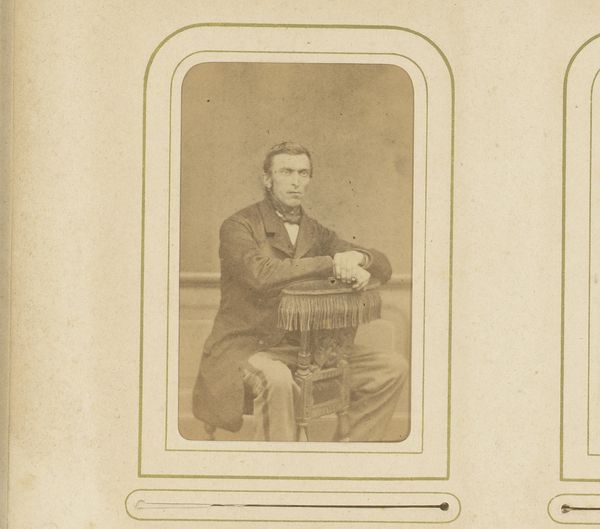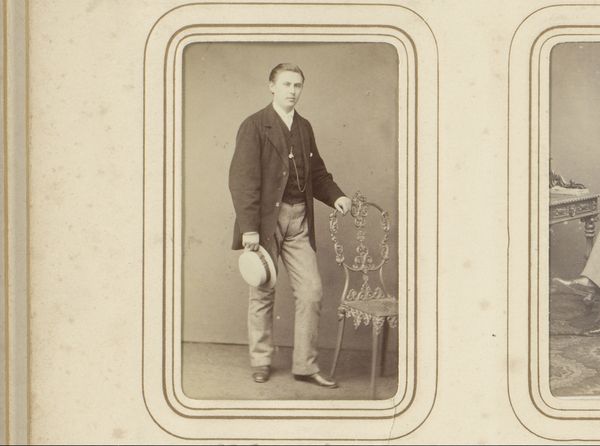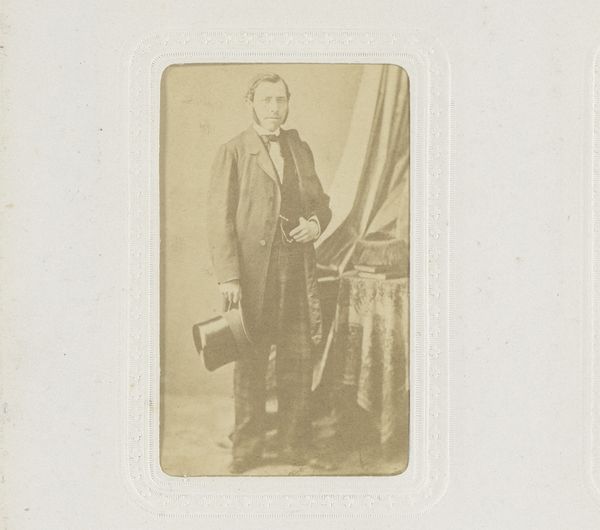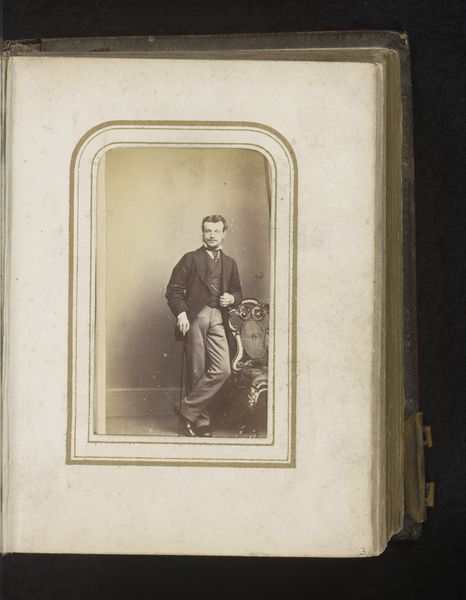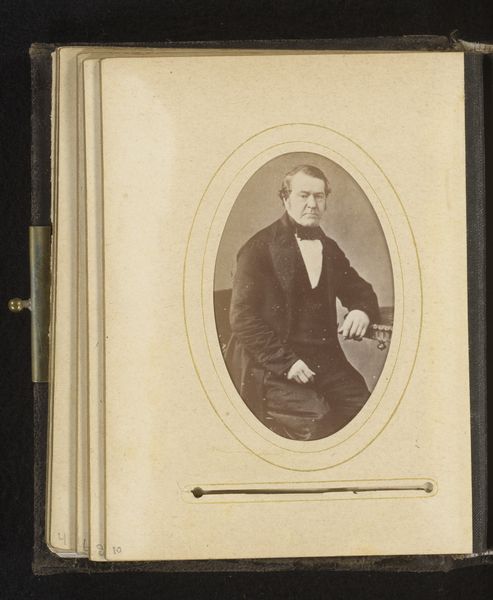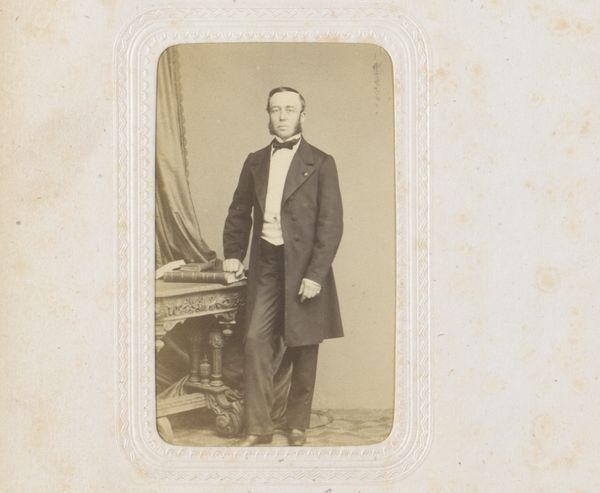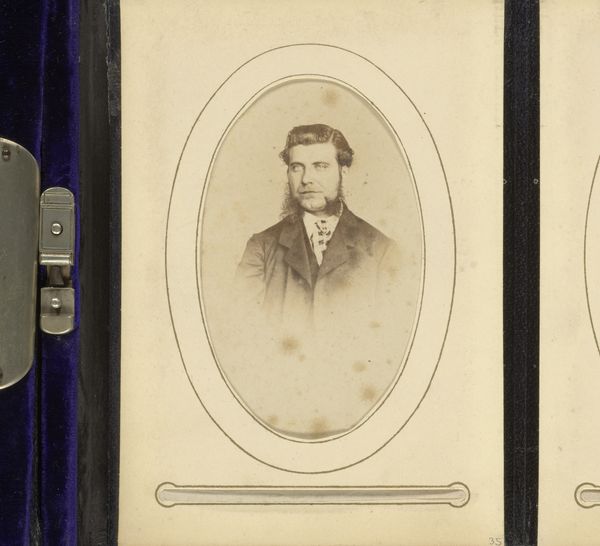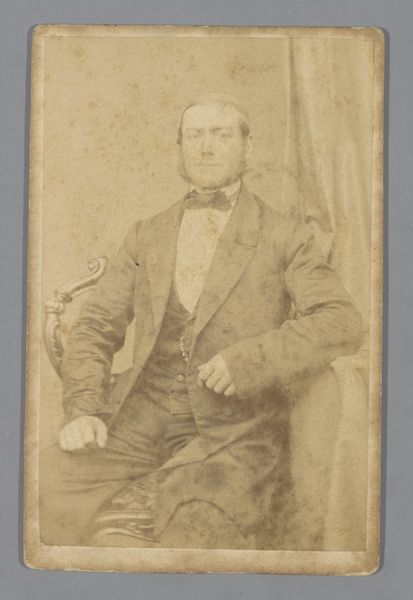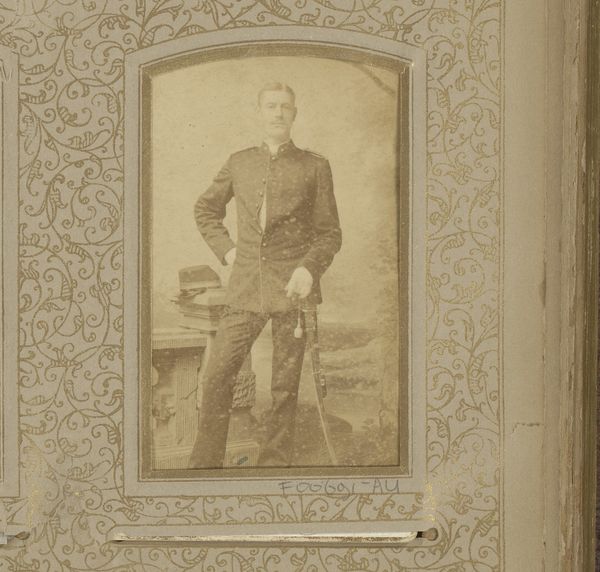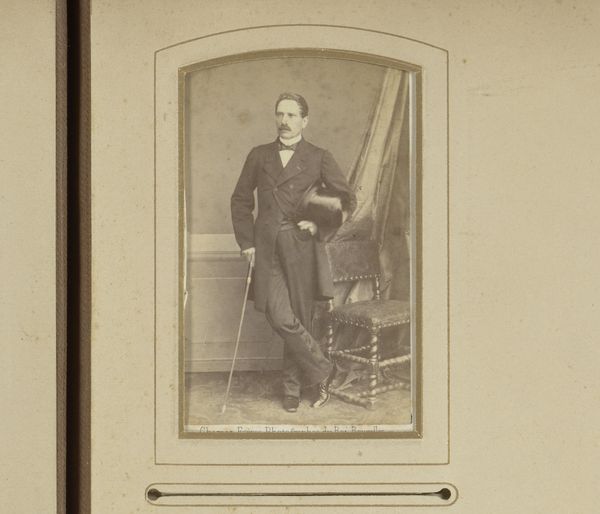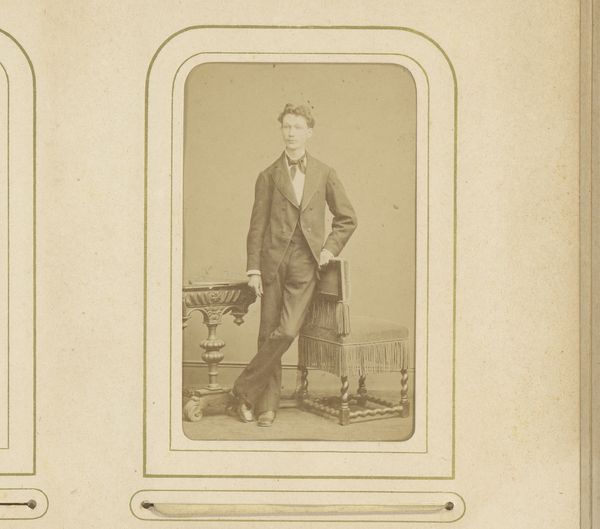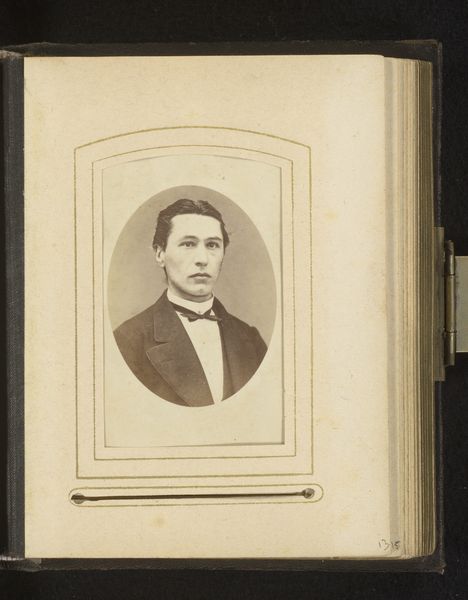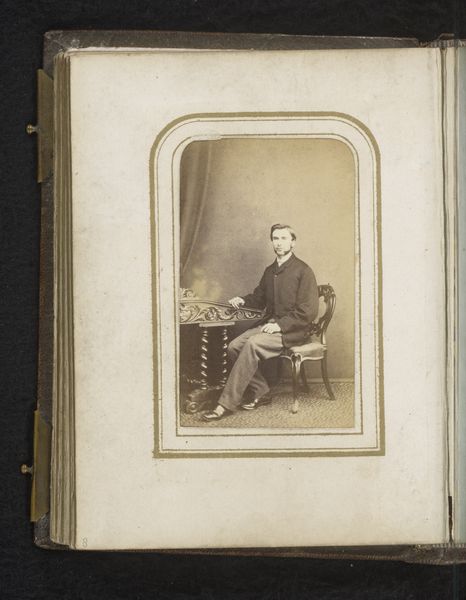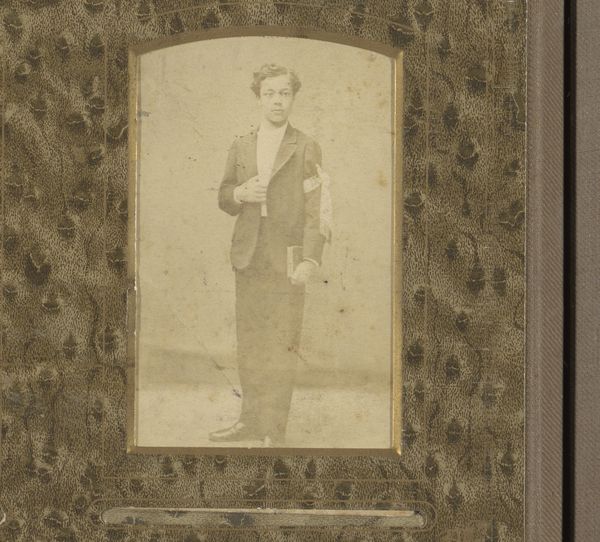
photography, gelatin-silver-print
#
portrait
#
photography
#
gelatin-silver-print
#
realism
Dimensions: height 95 mm, width 58 mm
Copyright: Rijks Museum: Open Domain
Curator: This photograph, simply titled "Portret van een onbekende man," or "Portrait of an Unknown Man," was captured sometime between 1855 and 1896 by Israël David Kiek. It’s a gelatin-silver print, a medium common for portraits during that era. Editor: My first thought? Melancholy. The sepia tones, the stiff pose—it whispers stories of a time so different from ours. There’s something about his eyes… a quiet sadness. Curator: Yes, and the anonymity is intriguing, isn't it? He stands as a representation of an era, perhaps of a certain societal class, but also as an individual forever lost to history in many ways. His dress, while likely his best, subtly reflects social conventions and possibly economic realities. The portrait invites questions about how identity was performed, presented, and perceived during this period. Editor: Exactly. I imagine him going to the photographer's studio, this grand event in his life, trying to project dignity. But that chair—a prop really—doesn't quite support that dignity. It's all a bit forced. But his clothes suggest he's somebody, somewhere. Maybe. Curator: Consider too the development of photography at this time. Early portraiture was revolutionary, granting access to representation to broader segments of the population. Yet it simultaneously solidified certain conventions. Who was deemed worthy of remembrance and on what terms? This man sought to inscribe himself into history through this medium. Editor: Absolutely. The contrast is fascinating: technology granting newfound visibility but within such a rigid frame of expectation. You know, I wonder if he ever imagined his image would be scrutinized like this, generations later? It makes me think of my own snapshots... what will people say? Curator: Indeed. Thinking about photography from a historical and societal lens allows us to reflect critically on what portraits are portraying, whose stories are archived, and what social roles are reflected. It is about visibility but it's also about absence and erasure. Editor: Makes you pause, doesn't it? And makes me weirdly sympathetic for this "unknown man", stuck forever in this little frame, doing his best for the camera. Curator: Yes, looking at him connects us with histories of representation. And perhaps the “unknown” tag also provides an invitation for us to project and imagine beyond established narratives. Editor: Right, and find something deeply human in the process.
Comments
No comments
Be the first to comment and join the conversation on the ultimate creative platform.
